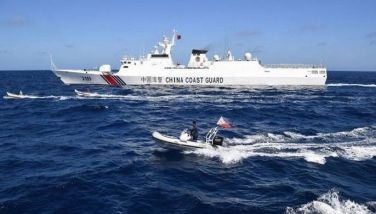#Journeyto30 Nature’s wrath
MANILA, Philippines - First, the birds. They flew in large swarms away from Mount Pinatubo, a volcano that had been dormant for five centuries. Some Aeta residents at the foot of the mountain reported seeing “a stampede of thousands of animals” that hurried to safety when they sensed the impending catastrophe.
Then came the earthquakes, which the Philippine Institute of Volcanology and Seismology (Phivolcs) called “harmonic tremors” and were felt longer than usual. The volcano also began emitting ash plumes, caused by small phreatic eruptions, which fell on towns closest it.
On June 10, 1991, the US government began evacuating some 14,500 personnel and their dependents from Clark Air Base, which was located 15 kilometers from the volcano. Military vehicles transported the personnel to Subic Bay Naval Base, where navy ships awaited to bring them stateside. Philippine authorities also began evacuating some 12,000 residents living within a 30-km radius danger zone, including Aeta residents from the slopes of Pinatubo.
Then, without warning, came the monstrous explosion followed by the gigantic columns of ash and smoke from the volcano’s crater that quickly billowed for miles in the sky.
Pinatubo was finally awake.
The eruption on June 12, during the country’s 93rd Independence Day, was Pinatubo’s first major eruption. But it wasn’t the last and the most explosive. In the days that followed, it unleashed nature’s wrath in the form of ash, sulfur gas and pyroclastic material that roared down the slopes of Pinatubo. Eyewitnesses reported seeing boulders the size of cars falling from the mountain.
Three days later, on June 15, Pinatubo’s climactic and most powerful eruption happened. Volcanologists pegged the eruption at Level 6 in the Volcanic Explosivity Index — the second highest level. The climactic eruption ejected five cubic kms. of pyroclastic material and 20 million tons of sulfur dioxide. The explosion created a massive ash cloud that rose 35 kilometers. Reporters said the sky was so dark it was “like the night.”
Such was the force of the eruption that ash clouds were able to reach as far as the Indian Ocean and were enough to cool the Earth’s temperature by half a degree.
The cataclysm was a nightmare for Philippine authorities as they struggled to evacuate thousands of residents in the affected areas and provide basic needs. Some residents refused to leave their homes even at gunpoint, unaware of the imminent danger from the volcano.
To make matters worse, Typhoon Diding formed in the Pacific Ocean off Samar and moved northwest, bringing rain to Luzon and causing ash from Pinatubo to turn into massive mudflows called lahar.
A total of 847 people died in the catastrophe, many of whom were buried in houses that collapsed under the heavy weight of the wet ash on the roofs. Others were killed by lahar that inundated homes along major rivers that flowed from the volcano.
Evacuees swelled to 329,000 families, who were resettled in Pampanga, Bulacan, Tarlac and Metro Manila. Respiratory ailments, diarrhea and measles also became widespread among evacuees, particularly children.
A government post-assessment of the damage showed the startling cost of the cataclysm: Damage to agriculture, infrastructure and personal property totalled at least P10.1 billion in 1991 and another P1.9 billion in 1992. Region III lost a total of P454 million in business in 1991, with manufacturing as the most affected sector.
Pinatubo’s monumental impact placed a heavy burden on the Cory Aquino administration, which was still recovering from the 1990 Luzon earthquake and a series of bloody coup d’états in 1989. The Pinatubo eruption was its last major challenge.
To consolidate government and private sector response to the disaster, Aquino signed Memorandum Order 369 on June 26, creating Task Force Mount Pinatubo. The government response harnessed bayanihan as its rehabilitation, reconstruction and development strategy. It formed Kabisig programs, participated in by various local and foreign aid agencies both from the government and private sectors. The Kabisig programs created alternative livelihood, built new communities, distributed aid and took care of affected families.
The success of the Kabisig programs proved that the Cory Aquino administration was up to the challenge. Indeed, with a nation working hand-in-hand in the face of disaster, a nation can endure and triumph over even a monstrous hail of ash and stone.
Today, there are barely any signs of the cataclysm that rocked Central Luzon. In the wake of the destruction, it left the region with an abundance of mineral resources that is now a major source of livelihood. It’s amazing how nature’s wrath turned the center of a catastrophe into a center of trade, economic growth and opportunity.
- Latest
- Trending




























